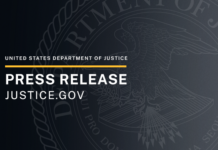
The Solo & Small Firm report is sponsored by LawPay.
The adoption of new technologies and the implementation of comprehensive technology plans and processes is crucial to the ability of any business to thrive in its market, including law firms. Following up on previous years’ Legal Technology Survey Reports, the American Bar Association once again fielded responses from attorneys representing a wide range of demographics to determine how firms are using technology and ensuring strong data and network security.
Below is a brief summary of the report, which you can purchase in full here.
Demographics
Before summarizing the key findings of the 2020 ABA Legal Technology Survey Report, Volume II: Technology Basis & Security, it is also important to briefly note a few important respondent demographics.
Of the attorneys responding, 26%were solo practitioners, 30% at firms of 2-9 attorneys, 17% at firms of 10-49 attorneys, 5% at firms of 50-99 attorneys, 10% at firms of 100-499 attorneys, and 12% at firms of 500+. The largest practice area, based on billing, was litigation (27%), followed by estate planning (20%), and real estate transactions (16%).
The average respondent had been admitted to the bar for 30 years. The average age was 58. About 69%of the respondents were male and 31% female.
Technology
Budget and goals
Respondents to the 2020 Survey were asked about the budget they have for technology for their firms and their technological goals.
This year, 62% of firms responded that they budget for technology (up from 60%in 2019). This percentage increases with firm size, a trend consistent with past results. The larger the firm size, the more likely the firm is to budget for technology. Of respondents familiar with their firm’s annual spending on software, the most frequent response was $20,000+, followed by $1,000-$2,999. In regard to firms’ annual spending on hardware, the most frequent response was $1,000-$2,999, followed by 20,000+. In both cases, larger firms were more likely to spend more money.
Technology decisions were most frequently made either by a solo practitioner, managing partner, or all partners, though 81% of respondents said they had at least some level of input into the types of technologies they use.
The most common priority for future tech spending goals was office hardware (30%), followed by mobile technology (17%). Hardware was also the top priority for about the same percentage of respondents in 2019.
Training and support
When asked whether or not lawyers at their firms are required to undergo ongoing technology education or training, 67% of respondents said they were required to stay abreast of technology’s benefits and risks as part of the firm’s basic competency requirement, an increase from 2019 (64%). At 72%, solo firms are most likely to report the requirement.
Respondents were most likely to turn to internal tech support for problems with their firm’s technology, at the same percentage as in 2019 (40%). Respondents choosing to first approach a consultant saw a slight drop in 2020 (27%) from 2019 (28%) and 2018 (30%).
Regarding tech problems, 46% of respondents said tech problems rarely impacted productivity, with 45% saying “sometimes” and 7% saying “often.” The largest percentage of “often” or “sometimes” responses came from firms of 100+ attorneys (60%, down from 64% in 2019).
When asked about the importance of receiving training on the firm’s technology, 42% of respondents said it was “very important” and 40% said it was “somewhat important.”
Security
Technology policies
Respondents were asked which technology policies the firm had in place for governing technology. Half or more of firms had policies for using email, internet, and computers, as well as for remote access. The larger the firm, the more likely it was these policies would be in place. As in 2019, solo respondents were the most likely to not have any such policies in place, with 58% responding “none,” a slight increase from 2019.
Security tools
When asked about the types of security tools law firms are using, respondents most frequently used spam filters (81%), anti-spyware (76% ), and firewalls (74%) out of the variety of options listed. As with 2019, solo practitioners and small firms were the most likely to not allow some forms of personal mobile devices to access their networks at 22% and 9% respectively, down from 29% and 16% in 2019. Overall, though, 87% of respondents’ firms allowed personal mobile devices.
Security breaches
Twenty-nine percent of respondents reported experiencing a security breach at some point, and 21% stated they were unsure whether or not the firm’s security had ever been breached. Firms of 10-49 attorneys were most likely to have experienced a security breach at a rate of 42%. The “don’t know” percentage increased with the size of the firm.
Viruses, spyware, and malware
Thirty-six percent of respondents reported having had technology infected with viruses, spyware, or malware at some point, while 26% did not know. Again, the “don’t know” percentage increased with the size of the firm. For the first time in the last four years, firms of 10-49 attorneys were not the most likely group to experience having had issues with malware—that result was from firms with 2-9 attorneys this year, at a rate of 45% (versus 44% for firms of 10-49 attorneys, a decrease from last year’s 48%).
The most common types of losses reported as a result of infection were consulting fees for repairs (39%, down from 40% in 2019), downtime/loss of billable hours (35%, up from 32% in 2019), and temporary loss of network access (23%, same as 2019). Firms reported using a variety of physical security tools, but solo practitioners were least likely to use physical security tools of any type.
Backup
By far the most commonly used methods of data backup were online sources (such as the cloud), external hard drives, and offsite sources. The larger the firm, the less likely the respondent was to know how the firm backed up its files. 71% of respondents from firms with 100+ attorneys did not know, versus 2% of solo respondents and 12% from firms of two to nine attorneys. Sixty percent of respondents reported having a formal policy for retaining information or data held by the firm (56% in 2019).
Summary
The general trend seen in the 2020 Survey is that the larger the firm, the more likely it is to have formal technology measures and procedures in place. With greater size, however, comes less familiarity from individual respondents regarding the technology and security decisions being made.
Smaller and solo firms are more likely to be behind with adopting formal processes and plans for technology, and especially so with security. The lack of formalized processes, however, does not necessarily mean the smaller firms are not adopting technologies—more so that the specific plans larger firms have are more likely to be comprehensive and formalized out of necessity due to standardization needs with more employees.
Many of the responses remained close to where they were in 2019, which would indicate firms have not made significant adjustments to technology plans or processes in the last year. But as responses were collected before COVID-19 swept the world, they serve as an interesting bookmark in history ahead of what are likely to be very different results next year.
Watch a video from our sponsors!
[embedded content]



